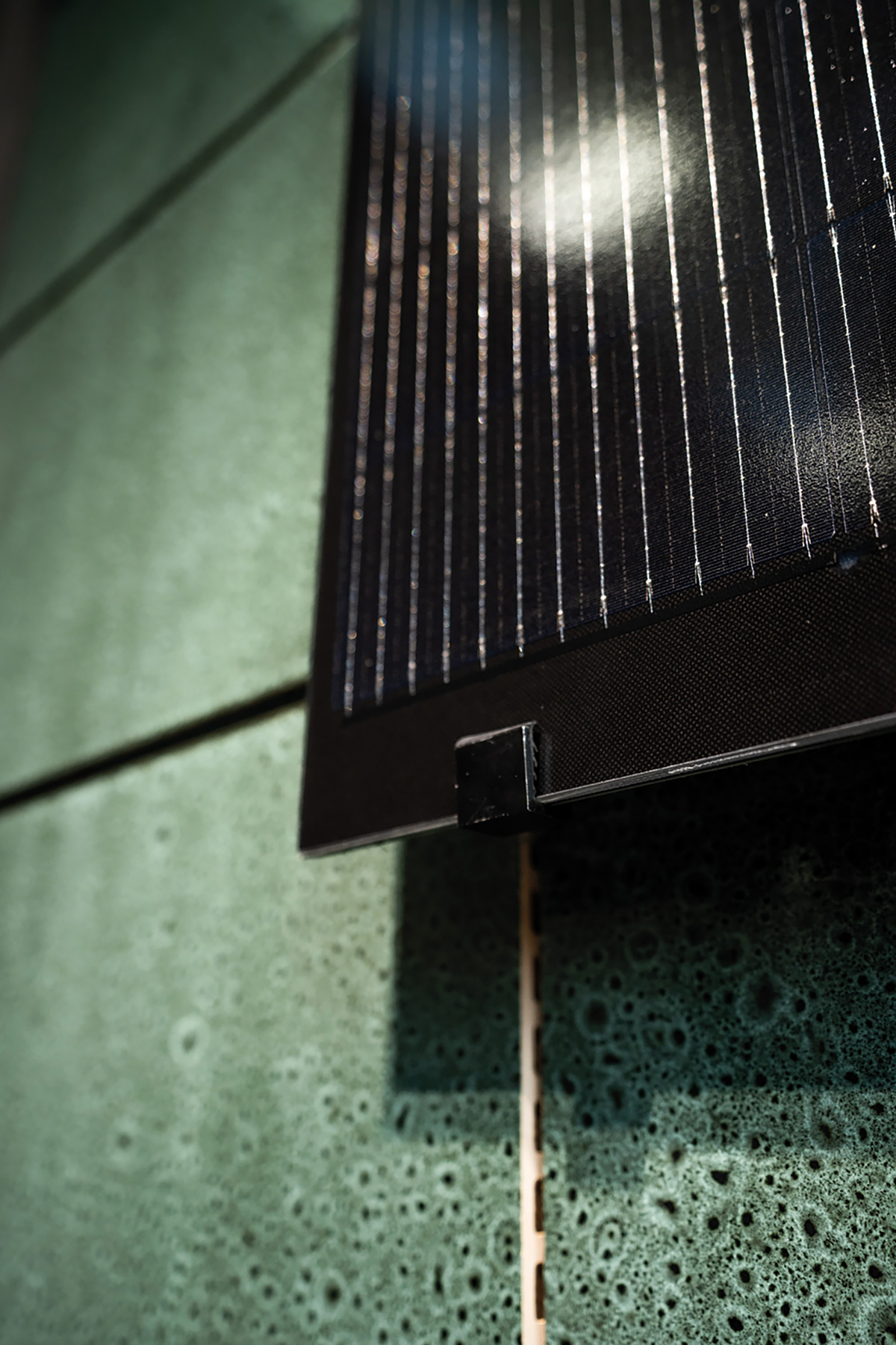Power Station Facade

By further developing our system components, we want to make the integration of modern PV modules into existing and new facade solutions as uncomplicated as possible. The combination should be efficient and easy for both the processors and planners, thus taking a big step towards pioneering facades fit for the future.
With the further development of our substructure, it will be possible to integrate photovoltaic systems into the ceramic facade efficiently and attractively in future.
Together with leading companies in the photovoltaic industry, we have developed solutions to attach photovoltaic modules in or in front of our ceramic facade using our proven assembly systems.
Thanks to the further development of our standardised fastening system, it is now possible to assemble ceramic tiles and photovoltaic modules parallel to each other. We rely on proven MOEDING system components. Using a standardised system saves a lot of time and results in maximum efficiency. The well-known advantages of MOEDING ceramic facades, such as flexible fastening sequence, reusability of the system components and simple assembly of the construction, are also convincing here.
There are now numerous possibilities to make the PV modules visually appealing as well. For example, it is possible to print on the modules, for instance to replicate the look of the ceramic elements. This ensures a uniform facade system and meets planners’ design requirements as well as sustainability aspects. Retrofitting with PV modules is also possible for existing MOEDING ceramic facades using our fastening system. Since our ceramic tiles can be removed flexibly at any time, the flush-mounted version can be swapped for PV modules or the version with rainscreen cladding can be supplemented by PV modules at any time.
Depending on the location of the property, the facade can make a major contribution to the building’s energy requirements thanks to the integrated photovoltaic systems. Additional areas can be used, which have not had a function so far, especially in large cities. The lower lying sun in the winter ensures a more favourable impact of the sun’s rays on the facade.
In some circumstances, the energy yield in winter may therefore be higher for a vertically mounted PV system than for a PV system on an inclined surface. In contrast to rooftop systems, the energy yield in winter is not reduced by the accumulation of snow.
FLUSH INTEGRATION
INTEGRATION WITH RAINSCREEN CLADDING
Separation of functions in wall construction:
1 Load-bearing wall
2 Thermal insulation
3 Substructure
4 Brick tile
5 PV module
Power Station Facade
With the further development of our substructure, it will be possible to integrate photovoltaic systems into the ceramic facade efficiently and attractively in future.
Together with leading companies in the photovoltaic industry, we have developed solutions to attach photovoltaic modules in or in front of our ceramic facade using our proven assembly systems.
Thanks to the further development of our standardised fastening system, it is now possible to assemble ceramic tiles and photovoltaic modules parallel to each other. We rely on proven MOEDING system components. Using a standardised system saves a lot of time and results in maximum efficiency. The well-known advantages of MOEDING ceramic facades, such as flexible fastening sequence, reusability of the system components and simple assembly of the construction, are also convincing here.
There are now numerous possibilities to make the PV modules visually appealing as well. For example, it is possible to print on the modules, for instance to replicate the look of the ceramic elements. This ensures a uniform facade system and meets planners’ design requirements as well as sustainability aspects. Retrofitting with PV modules is also possible for existing MOEDING ceramic facades using our fastening system. Since our ceramic tiles can be removed flexibly at any time, the flush-mounted version can be swapped for PV modules or the version with rainscreen cladding can be supplemented by PV modules at any time.
Depending on the location of the property, the facade can make a major contribution to the building’s energy requirements thanks to the integrated photovoltaic systems. Additional areas can be used, which have not had a function so far, especially in large cities. The lower lying sun in the winter ensures a more favourable impact of the sun’s rays on the facade.
In some circumstances, the energy yield in winter may therefore be higher for a vertically mounted PV system than for a PV system on an inclined surface. In contrast to rooftop systems, the energy yield in winter is not reduced by the accumulation of snow.

